![Can a Child Ride an Electric Scooter on the Pavement? [Safety Guide]](http://www.ihoverboard.co.uk/cdn/shop/articles/back_school_kids_escooter_700_{width}x.png?v=1758278571)
Can a Child Ride an Electric Scooter on the Pavement? [Safety Guide]
Electric scooters are a favorite among kids, offering both fun and freedom, but many parents ask: can a child ride an electric scooter on the pavement? While pavements might seem like a convenient place to ride, they are not the safest option for young riders. This guide explores why pavements aren’t ideal, where children should ride instead, and how to make every scooter session safe, enjoyable, and worry-free.
Can a Child Ride an Electric Scooter on the Pavement?
Many parents wonder whether pavements are a good place for kids to ride their electric scooters. While they may seem safe compared to busy roads, pavements come with their own risks. Crowded walkways, uneven surfaces, and obstacles can make it difficult for children to control their scooters properly. For younger riders, this increases the chances of bumps, falls, or accidents with pedestrians.
Instead of pavements, children are much safer riding in controlled areas designed for play and practice. These allow them to build confidence without the added hazards of foot traffic.
Here’s why pavements aren’t the best choice for children:
-
Crowded spaces: Pedestrians, pets, and pushchairs make pavements unpredictable.
-
Trip hazards: Uneven slabs, curbs, or cracks can cause scooters to tip.
-
Limited space: Pavements are narrow, making it hard for kids to ride comfortably.
-
Risk to others: Children may accidentally bump into walkers, especially at higher speeds.
Encouraging your child to ride in a safer, open environment ensures they get the fun of scootering without the risks that pavements bring.
Why Pavements Aren’t Suitable for Kids’ Electric Scooters
At first glance, pavements may look like a safe option for children to ride their electric scooters, but in reality, they pose several challenges. Pavements are designed for walking, not for wheeled vehicles, which means they often lack the smooth and consistent surface kids need for safe riding. The narrow space also makes it difficult for children to maneuver without coming into close contact with others.
For kids still developing balance and control, these factors can quickly turn riding into a risky experience rather than an enjoyable one.
Key reasons pavements aren’t suitable for kids’ e-scooters:
-
Pedestrian safety: Children riding too fast may collide with walkers or joggers.
-
Obstacles and clutter: Benches, bins, and signposts create hazards that can be tricky to avoid.
-
Surface quality: Cracked slabs, curbs, or uneven ground increase the chance of falls.
-
Distractions: Busy pavements with people, dogs, or bikes can overwhelm young riders.
Choosing open, smooth areas instead of pavements helps children enjoy scootering in a safer and more controlled environment.
Safer Places for Children to Ride an E-Scooter
Pavements may seem convenient, but they aren’t the best or safest choice for kids on electric scooters. Instead, children should ride in spaces where there’s plenty of room, smooth ground, and minimal distractions. Choosing the right environment helps reduce risks and makes riding more enjoyable.
Safer alternatives for kids to ride an e-scooter include:
-
Driveways and gardens: Great for first-time riders in a familiar setting.
-
Parks with open paths: Wide and spacious areas allow kids to ride freely.
-
Scooter or skate parks: Designed for wheels, offering smooth surfaces and safe practice zones.
-
Quiet residential areas: Low-traffic spots where children can ride with less risk.
With proper supervision and the right setting, children can develop their scooter skills safely while still having plenty of fun.
What Age is Right for a Child to Start Riding?
The right age for a child to begin riding an electric scooter depends more on maturity, coordination, and safety awareness than just numbers. While many models are designed for younger kids, it’s important that your child has the balance and confidence to handle a scooter before hopping on.
Key factors to consider when deciding the right age:
-
Physical coordination: Can your child balance well and steer confidently?
-
Strength and control: Are they able to use the brakes and manage the scooter’s weight?
-
Focus and attention: Do they understand basic safety rules like slowing down near others?
-
Supervision needs: Younger riders benefit most from close adult guidance.
-
Scooter type: Choose child-friendly models with adjustable speed modes.
Every child develops differently, so focus on readiness and safety gear rather than age alone when introducing an e-scooter.
iHoverboard B2 / iK1S Kids Electric Scooter
The iHoverboard B2 / iK1S is a great first electric scooter for children, created with riders aged 4–12 in mind. With dual-speed settings, height-adjustable handlebars, and durable solid wheels, it offers a smooth and stable ride that kids can enjoy confidently. Safety comes first with features like non-slip pedals, a rear foot brake, and secure magnetic charging, making this scooter a reliable and fun choice for young riders exploring at home.
Key Features & Specifications:
-
Age Range: Suitable for children aged 4–12
-
Speed Modes: 6 mph and 9 mph for both beginners and experienced riders
-
Wheels: 5.5–6 inch solid PU + rubber flashing wheels for stability and style
-
Braking System: Rear fender foot brake for controlled stopping
-
Adjustable Handlebar: 3 height levels to grow with your child
-
Battery & Charging: 18V 2.6Ah battery with magnetic snap-on charging (3–4 hours charge time)
-
Maximum Load: Supports up to 110 lbs (50 kg)
-
Dimensions: 28.5 x 14.2 x 36.8 in (72.5 x 36 x 93.5 cm)
-
Motor: 100W motor delivering consistent performance
-
Extra Safety Features: Non-slip pedals and built-in lights for better visibility and fun
Lightweight, easy to control, and designed with growing kids in mind, the iK1S makes scootering both safe and exciting. It’s the perfect balance of play and protection for young riders.
Choosing the Right Scooter for Kids
Picking the right electric scooter for children is key to ensuring both safety and enjoyment. Not all scooters are built the same, so it’s important to consider your child’s age, size, and riding experience before making a choice. A scooter that’s too fast, heavy, or advanced can be difficult to control, while one designed for kids offers a smoother and safer ride.
When selecting a scooter for your child, keep these factors in mind:
-
Age Suitability: Look for scooters specifically designed for children, usually with lower speeds and safety features.
-
Adjustable Handlebar: A scooter that grows with your child ensures proper posture and control as they get taller.
-
Speed Options: Dual-speed modes let kids start slow and increase speed as their confidence builds.
-
Wheel Type: Solid or PU flashing wheels add stability, reduce the risk of punctures, and make rides more fun.
-
Braking System: Rear fender foot brakes or simple hand brakes give kids an easy way to stop safely.
-
Weight & Portability: A lightweight scooter is easier for kids to handle and for parents to carry if needed.
-
Safety Features: Non-slip pedals, lights, and responsive braking systems help keep young riders protected.
By focusing on these essentials, parents can find a scooter that balances fun with safety—giving kids the freedom to ride while staying in control.
Essential Protective Gear for Young Riders
Even the most careful child can take a tumble on an electric scooter, which is why protective gear is non-negotiable. The right equipment not only reduces the risk of injury but also builds confidence, allowing kids to focus on enjoying the ride. Parents should make sure their child is fully equipped before every ride.
Key protective gear every young rider should wear includes:
-
Helmet: The most important piece of safety gear—choose a properly fitted, certified helmet that covers the forehead.
-
Knee Pads: Protects against scrapes, bruises, and potential joint injuries during falls.
-
Elbow Pads: Helps prevent cuts or fractures if your child falls sideways.
-
Wrist Guards: Kids often put their hands out when falling; wrist guards reduce the risk of sprains or breaks.
-
Gloves: Improve grip on the handlebars and protect palms from scrapes.
-
Closed-Toe Shoes: Trainers or sneakers provide solid grip and foot protection, unlike sandals or flip-flops.
-
Bright or Reflective Clothing: Improves visibility, especially during early evenings or cloudy conditions.
By making protective gear a routine part of every ride, parents can greatly reduce accident risks and ensure that their child enjoys safe, fun scooter adventures.
Tips for Parents to Keep Kids Safe on Scooters
Ensuring your child’s safety on an electric scooter starts with preparation and guidance. Kids may be eager to ride, but they need structure, supervision, and rules to keep their adventures both fun and accident-free. Parents play a key role in creating safe riding habits that will stick as children grow older.
Here are some useful safety tips for parents:
-
Supervise Beginners: Always watch over children when they’re first learning to ride until they gain balance and confidence.
-
Set Speed Limits: Choose scooters with adjustable speed settings and keep them on the lowest mode for younger or less experienced riders.
-
Create a Safe Riding Zone: Encourage scooter use in open, flat areas away from traffic, steps, and obstacles.
-
Check the Scooter Before Riding: Regularly inspect brakes, wheels, and battery to ensure everything works properly.
-
Teach Basic Safety Rules: No riding with one hand, no sharp turns at high speed, and always stop if unsure.
-
Model Good Habits: Parents who wear helmets and show caution set the best example for their children.
-
Keep Rides Short at First: Start with short sessions to avoid fatigue, which can lead to accidents.
By combining supervision, the right equipment, and clear rules, parents can help their kids develop safe riding habits that make every scooter trip enjoyable and secure.
iHoverboard Electric Scooter in Comparison
|
Spec / Model |
|||||||
|
Image |
 |
 |
 |
 |
 |
 |
 |
|
Motor Power |
800 W (rear-wheel) |
800 W (rear-wheel) |
1000 W |
1200 W (rear-wheel) |
2000 W (dual motor) |
1250 W (peak) / 1000 W rated |
Not listed |
|
Max Speed |
25 mph (40 km/h) |
28 mph (45 km/h) |
28 mph (45 km/h) |
28 mph (45 km/h) |
38 mph (60 km/h) |
32 mph (≈52 km/h) |
Not listed |
|
Range |
18–25 miles (30–40 km) |
25–28 miles (40–45 km) |
31–34 miles (50–55 km) |
30–37 miles (50–60 km) |
50 miles (80 km) |
31–34 miles (50–55 km) |
Not listed |
|
Battery |
48V 10Ah (480 Wh) |
48V 15Ah (720 Wh) |
48V 15Ah (720 Wh) |
48V 17.5Ah (840 Wh) |
48V 17.5Ah (840 Wh) |
48V 15.6Ah (748.8 Wh) |
Not listed |
|
Charging Time |
6–7 hrs |
6–8 hrs |
5–7 hrs |
7–9 hrs |
7–9 hrs |
6–8 hrs |
Not listed |
|
Tires |
10" pneumatic off-road |
10" pneumatic off-road |
11" pneumatic off-road |
11" pneumatic off-road |
10" tubeless off-road |
10" air-filled all-terrain |
10" off-road (listed) |
|
Suspension |
Dual front & rear (4 pts) |
Dual front & rear |
Dual front & rear (4-arm) |
Dual front & rear |
Dual front & rear |
Dual-arm suspension |
Not listed |
|
Brakes |
Dual disc + E-ABS |
Disc + E-ABS |
Triple braking (disc + E-ABS) |
Front disc; rear disc + E-ABS |
Dual disc + electronic |
Dual disc + E-ABS |
Not listed |
|
Water Resistance |
IP54 |
IPX4 |
IPX4 |
IPX4 |
IPX4 |
IPX4 |
Not listed |
|
Weight (net) |
48.5 lbs (22 kg) |
57.4 lbs (26 kg) |
60 lbs (27.3 kg) |
54.9 lbs (24.9 kg) |
65.4 lbs (29.7 kg) |
59.5 lbs (27 kg) |
49 lbs (22.3 kg) |
|
Load Capacity (max rider) |
264 lbs (120 kg) |
330 lbs (150 kg) |
330 lbs (150 kg) |
330 lbs (150 kg) |
330 lbs (150 kg) |
330 lbs (150 kg) |
Not listed |
|
Climbing Angle / Hill |
20–25% |
20–25% |
20–25% |
up to 35% |
25% |
30% |
Not listed |
|
App / Connectivity |
Yes (Minirobot APP, Bluetooth) |
Yes (Minirobot APP, Bluetooth) |
Yes |
Yes (NFC + app features listed) |
Yes (dashboard; app not specified) |
Yes (Circooter Club APP) |
Not listed |
|
Special Features |
3-step folding, LCD + app, 4 suspensions, ambient lights |
LED dashboard, cruise, turn signals, 3-step folding |
4 riding modes, 3-sec folding, adjustable handlebar, ambient lights |
NFC keyless unlock, magnesium frame, 2-step folding, ambient lights |
Dual/single motor modes, long range, magnesium frame, multiple modes |
Fast accel (15 mph in 3s), 6061 aluminium frame, IPX5 display, all-around lighting |
LED display, anti-slip pedal, bright lights, easy fold & carry |
|
Price (sale) |
£428.99 |
£458.99 |
£499.99 |
£589.99 |
£745.99 |
£619.99 |
£429.99 |
Conclusion
Electric scooters are an exciting way for children to stay active and have fun, but safety should always be the top priority. Pavements aren’t the ideal place for young riders due to obstacles and limited space, so choosing open, smooth, and controlled areas is essential. Equipping children with the right protective gear, selecting a scooter suited to their age and size, and providing supervision ensures a safe and enjoyable experience. By following these guidelines, parents can help their kids build confidence, develop good riding habits, and make the most of their scooter adventures.





































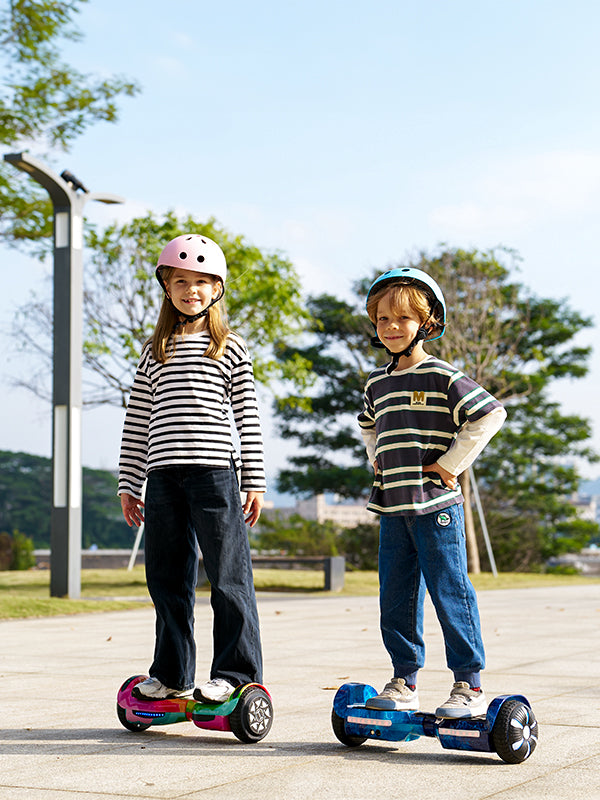




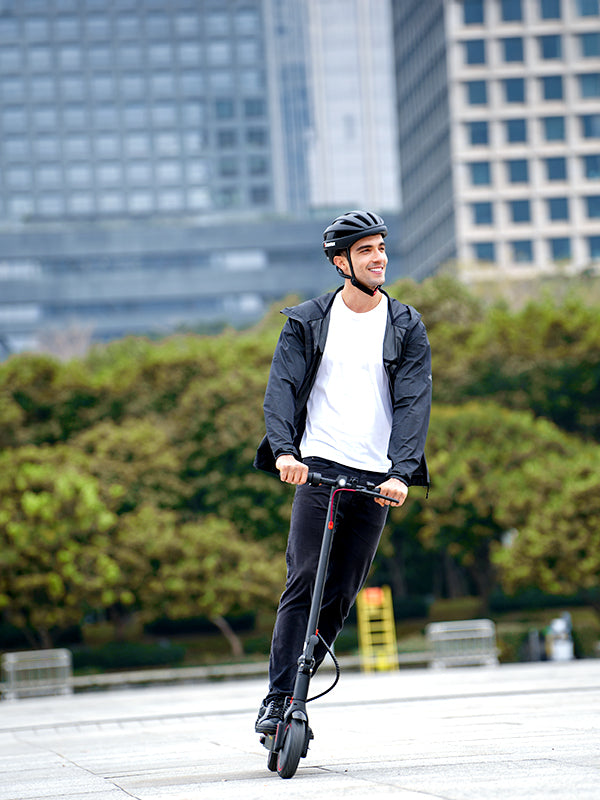


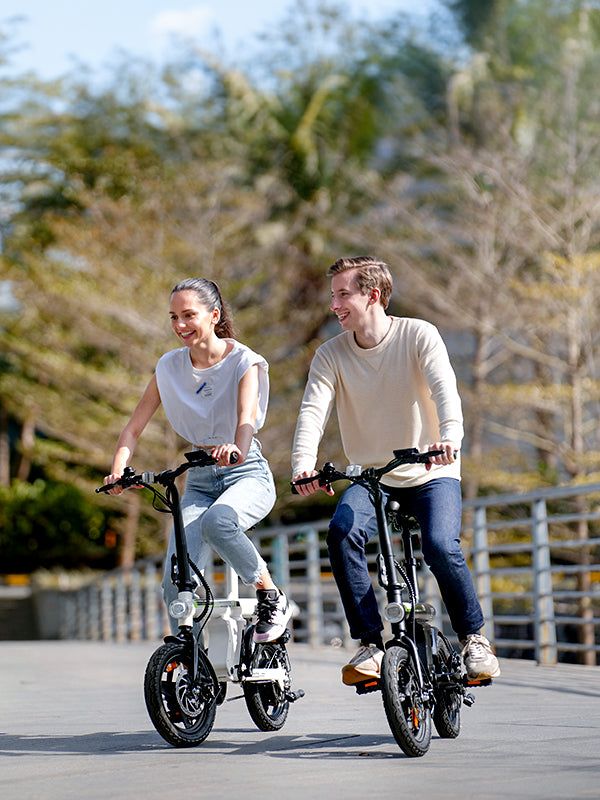

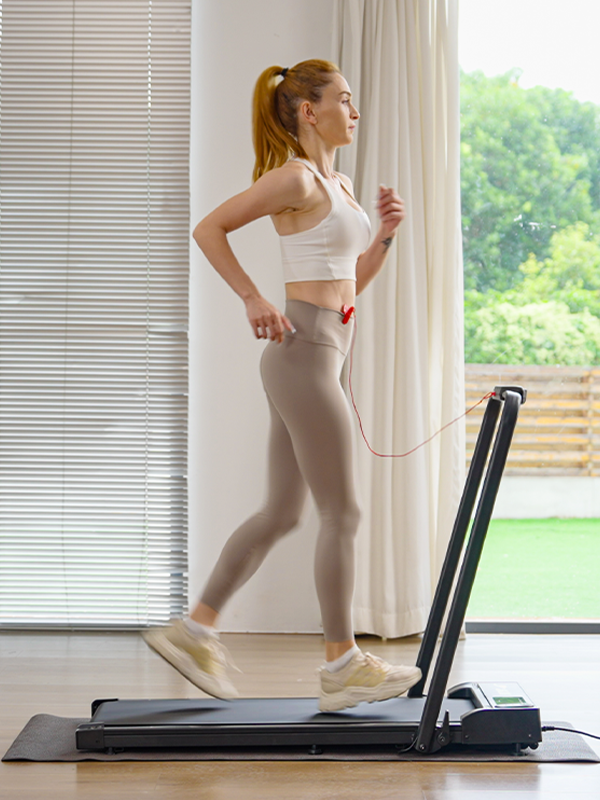





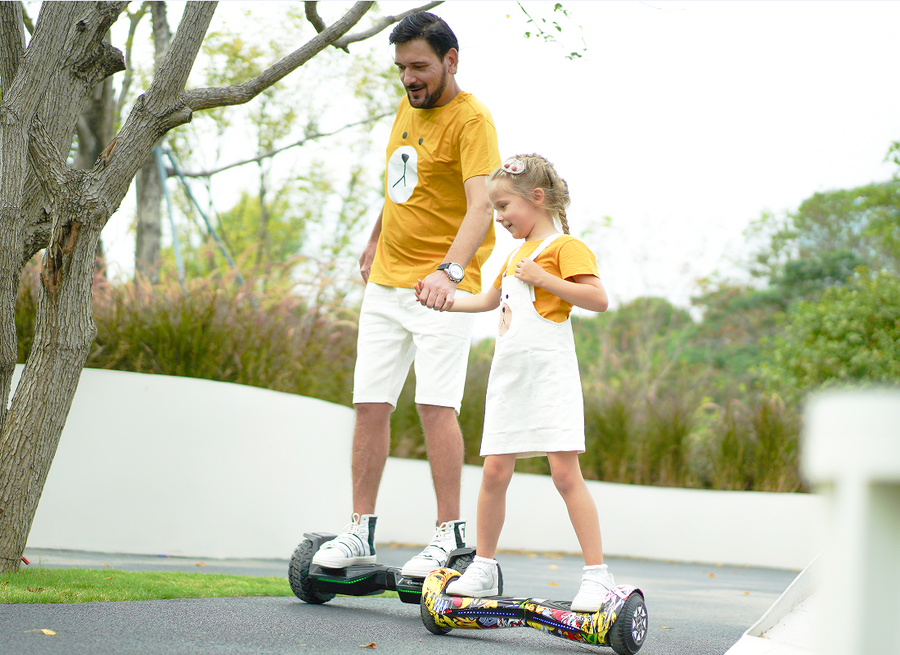
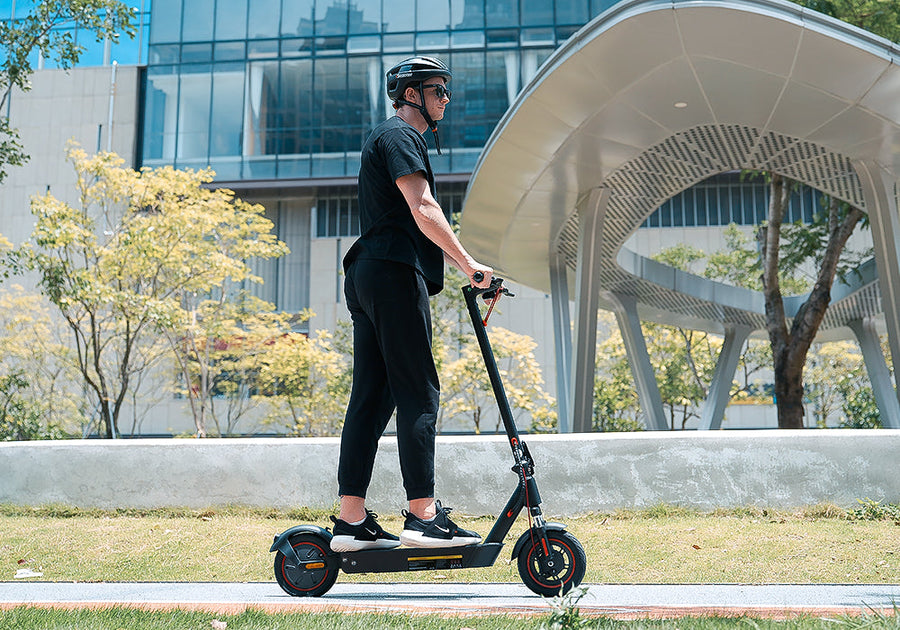
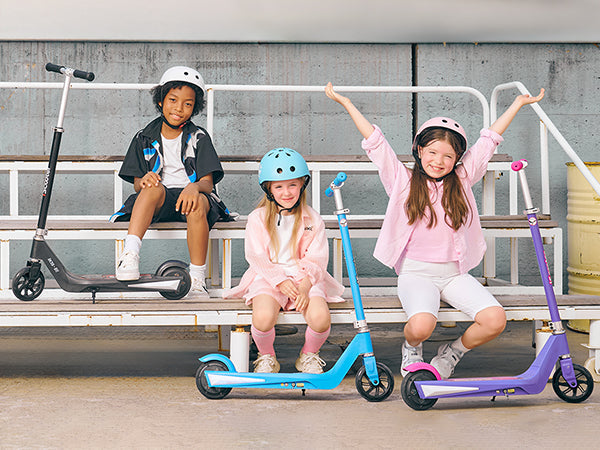
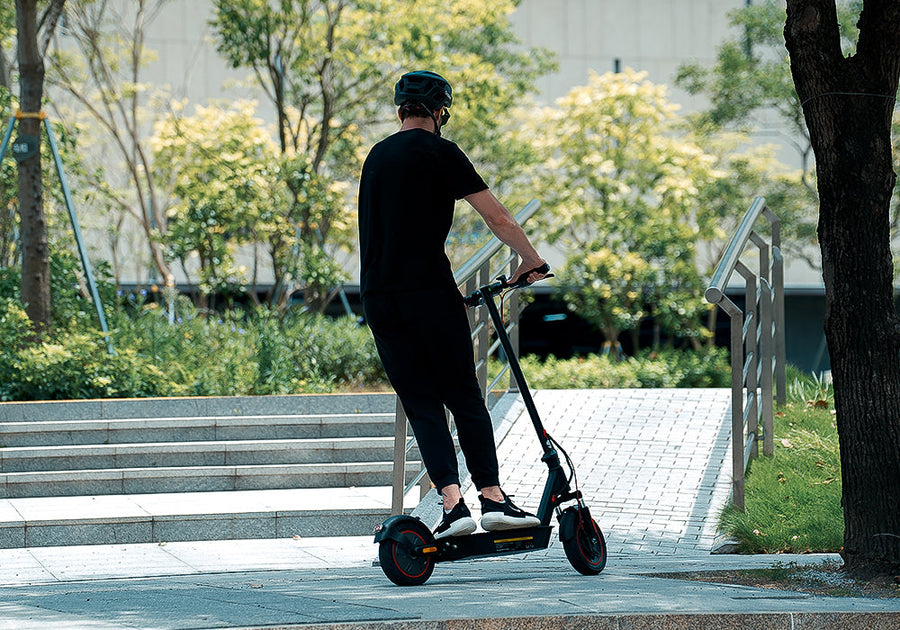


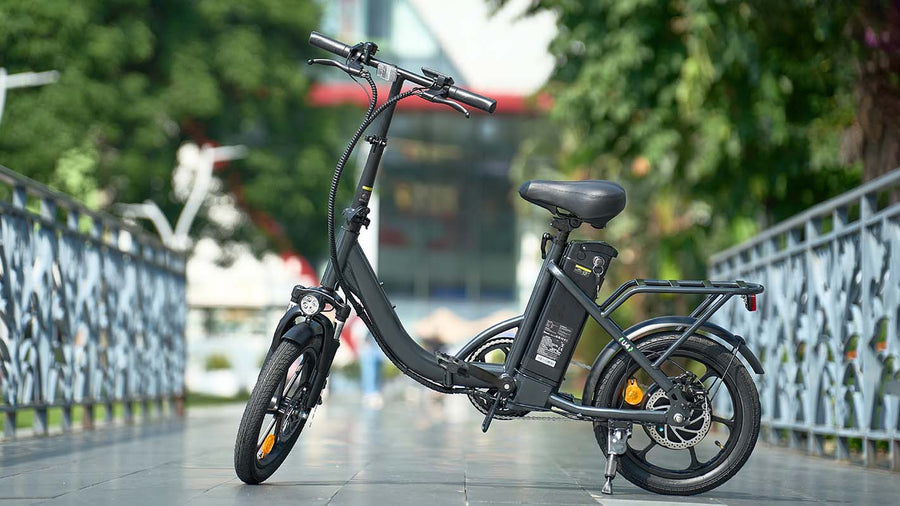
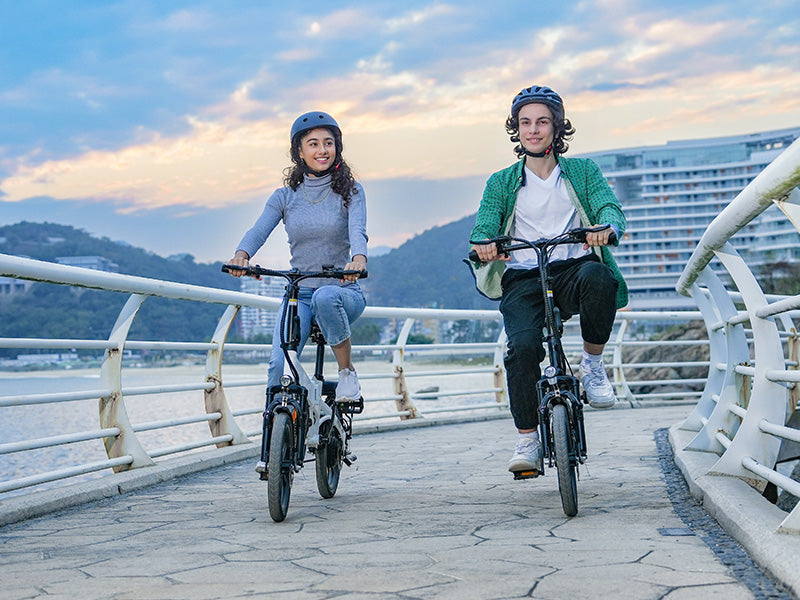
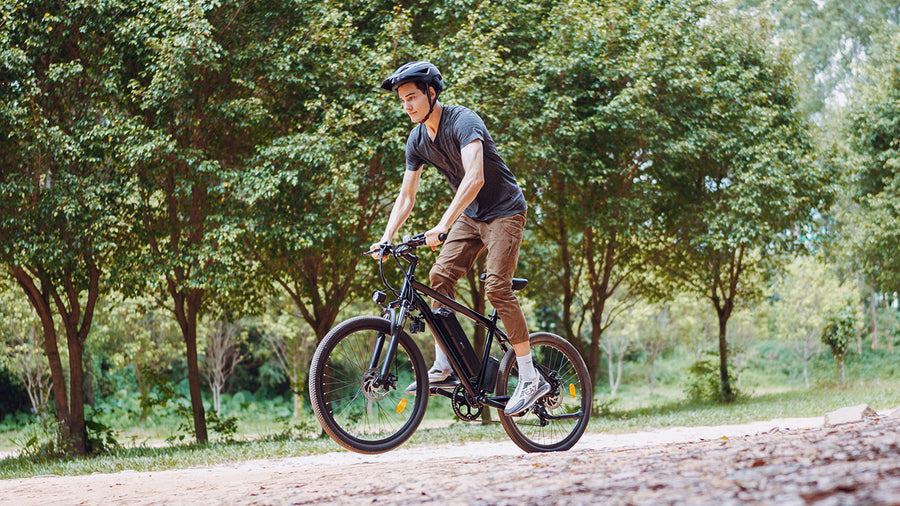







Still, need help? Contact Us: support@ihoverboard.com
What's the option? Check out the option now!
Leave us a message